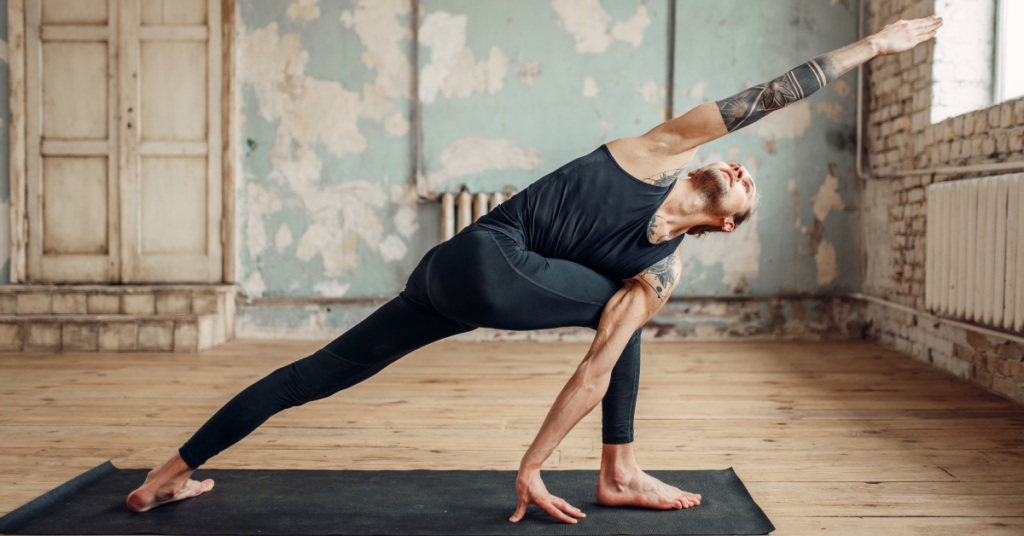As an athlete, you know that flexibility and mobility are key elements of athletic performance. The ability to move freely and efficiently through a full range of motion not only improves your performance but also helps prevent injuries. In this article, we will explore the importance of flexibility and mobility for athletes, discuss the benefits of incorporating specific training techniques, and provide practical tips to enhance your flexibility and mobility.
Introduction
Flexibility and mobility are often overlooked aspects of athletic training, but they play a crucial role in optimizing performance and reducing the risk of injuries. By incorporating specific flexibility and mobility exercises into your training routine, you can enhance your athletic abilities and maximize your potential.
Understanding Flexibility and Mobility
What is Flexibility?
Flexibility refers to the ability of your muscles and connective tissues to lengthen and stretch without restriction. It is often measured by the range of motion around a joint. Good flexibility allows you to move freely and perform movements with greater ease.
What is Mobility?
Mobility, on the other hand, encompasses both flexibility and joint mobility. It refers to the ability of your joints to move through their full range of motion with control and stability. Mobility involves not only the muscles and connective tissues but also the joint structures, such as ligaments and capsules.
The Importance of Flexibility and Mobility for Athletes
Injury Prevention
One of the primary benefits of flexibility and mobility training is injury prevention. Adequate flexibility and joint mobility help maintain proper alignment, reduce muscle imbalances, and alleviate excessive stress on the joints. By improving your flexibility and mobility, you can minimize the risk of strains, sprains, and other common athletic injuries.
Improved Performance
Flexibility and mobility directly impact athletic performance. They enhance your ability to generate power, optimize movement mechanics, and perform skills with precision. By increasing your range of motion and joint mobility, you can improve your speed, agility, and overall athletic performance.
Proper Movement Mechanics
Proper movement mechanics are essential for efficient and effective performance in sports. Flexibility and mobility training can help you achieve optimal movement patterns, allowing you to execute techniques with proper form and reduce unnecessary stress on your body. This leads to improved technique, efficiency, and overall performance.
Flexibility Training Techniques
Static Stretching
Static stretching involves holding a stretch for a sustained period, typically 15 to 30 seconds. This technique helps increase muscle length and improve flexibility over time. Static stretching is often performed after a workout or during a separate stretching session.
Dynamic Stretching
Dynamic stretching involves moving your joints and muscles through a full range of motion in a controlled manner. Unlike static stretching, dynamic stretching is performed in a more active and dynamic way, mimicking movements specific to your sport or activity. Dynamic stretching is commonly used as part of a warm-up routine.
Proprioceptive Neuromuscular Facilitation (PNF)
PNF stretching techniques involve a combination of static stretching and muscle contractions. These techniques utilize muscle groups’ inhibitory reflexes to increase the range of motion and flexibility. PNF stretching often involves a partner or resistance band to facilitate the stretch.
Yoga and Pilates
Yoga and Pilates are holistic approaches to flexibility training that focus on improving flexibility, strength, and body awareness. These practices combine various stretching and strengthening exercises with controlled breathing and mindful movements.
Mobility Training Techniques
Foam Rolling and Self-Myofascial Release
Foam rolling and self-myofascial release techniques involve using foam rollers or other tools to apply pressure to specific muscles and fascia. This helps release tension, improve tissue quality, and enhance joint mobility.
Joint Mobilization
Joint mobilization techniques are performed by a trained professional and involve applying gentle forces to the joints to improve their range of motion. These techniques help restore joint mobility, reduce stiffness, and promote optimal movement mechanics.
Active Range of Motion Exercises
Active range of motion exercises involve moving your joints through their full range of motion using your own muscle activation. These exercises improve joint mobility, proprioception, and overall movement control.
Functional Movement Training
Functional movement training focuses on integrating flexibility and mobility exercises into functional movements that mimic activities performed in sports or daily life. This type of training improves overall mobility, stability, and movement efficiency.
Tips for Effective Flexibility and Mobility Training
Consistency is Key
Consistency is crucial for improving flexibility and mobility. Aim to incorporate flexibility and mobility exercises into your regular training routine, ideally on a daily basis or at least several times per week. Consistent practice allows for gradual improvements over time.
Gradual Progression
Start with exercises and stretches that are within your current range of motion and gradually progress to more challenging movements. Listen to your body and avoid pushing yourself too far, too quickly. Gradual progression helps prevent injuries and ensures sustainable progress.
Proper Warm-Up
Always warm up your body before engaging in flexibility and mobility exercises. A proper warm-up increases blood flow to the muscles, prepares your joints for movement, and reduces the risk of injury. Incorporate dynamic movements and light cardio exercises to warm up your body.
Individualized Approach
Everyone’s body is unique, and individual differences in flexibility and mobility exist. Focus on your own progress and avoid comparing yourself to others. Consult with a qualified trainer or coach to develop a customized flexibility and mobility program tailored to your specific needs and goals.
Common Misconceptions and FAQs
Should I Stretch Before or After Exercise?
The current consensus is that dynamic stretching and mobility exercises are more suitable for warm-ups before exercise, as they prepare your body for movement. Static stretching is typically better suited for post-workout or separate stretching sessions to improve flexibility.
Can I Improve Flexibility and Mobility at Any Age?
Yes, flexibility and mobility can be improved at any age. While flexibility tends to naturally decrease with age, regular training and targeted exercises can help maintain and enhance your range of motion.
How Long Should I Hold a Stretch?
The duration of a stretch can vary depending on the technique and your individual needs. Generally, holding a static stretch for 15 to 30 seconds is sufficient. However, certain techniques, such as PNF stretching, may involve longer hold times or repetitions.
Can Flexibility and Mobility Training Make Me Slower?
No, improving flexibility and mobility can actually enhance your speed and performance. By optimizing movement mechanics and reducing muscle imbalances, you can move more efficiently, generating more power and speed.
Is Flexibility Training Only for Gymnasts or Dancers?
Flexibility and mobility are beneficial for athletes in all sports, not just gymnastics or dance. Regardless of your sport, having adequate flexibility and mobility allows you to perform at your best, prevent injuries, and optimize movement mechanics.
Conclusion
Flexibility and mobility are essential components of athletic performance. By incorporating regular flexibility and mobility training into your routine, you can enhance your range of motion, improve movement mechanics, prevent injuries, and ultimately unlock your full athletic potential. Remember to tailor your training to your individual needs and consult with a qualified professional to ensure proper technique and progression. Stay consistent, be patient, and enjoy the journey towards a more flexible and mobile body.
Frequently Asked Questions (FAQs)
- Can flexibility and mobility training replace strength training?
- Flexibility and mobility training should complement strength training, as each plays a distinct role in athletic performance. Both components are important for overall physical fitness and should be incorporated into a well-rounded training program.
- When is the best time to perform flexibility and mobility exercises?
- Flexibility and mobility exercises can be performed at various times, such as during warm-ups, after workouts, or in dedicated stretching sessions. Find a routine that works best for you and your schedule.
- How long does it take to see improvements in flexibility and mobility?
- The rate of improvement varies among individuals and depends on various factors such as genetics, current flexibility level, and training consistency. With regular practice and proper technique, noticeable improvements can be observed within weeks or months.
- Are there any specific exercises that can help with joint mobility?
- Yes, exercises like shoulder circles, hip rotations, and ankle circles can help improve joint mobility. Consult with a qualified professional to identify exercises that target specific joint mobility needs.
- Can flexibility and mobility training benefit non-athletes?
- Absolutely. Flexibility and mobility training have benefits for individuals of all fitness levels and lifestyles. Improved flexibility and mobility can enhance daily activities, reduce the risk of injury, and promote overall well-being.
Remember to listen to your body, progress at a comfortable pace, and consult with a qualified professional if you have any specific concerns or conditions. With dedication and consistent effort, you can enhance your flexibility and mobility, leading to improved athletic performance and overall physical fitness.
Disclaimer: When it comes to training techniques, always seek professional guidance and advice from sports and/or medical professionals who will be in a position to better address specific concerns or issues related to your individual situation. In no event shall we be liable for any direct, indirect, incidental, special, or consequential damages arising out of or in connection with your use of this website or the content provided herein.







